Magnesium and BDD: Calming an Overactive Nervous System
Introduction
Body Dysmorphic Disorder (BDD) is more than an obsession with appearance—it’s a battle that happens deep within the brain and nervous system. Those living with BDD often describe feeling on edge, anxious, or even physically tense most of the time. Their minds race, scanning mirrors or memories for flaws, while their bodies respond as if they’re under constant threat. This overactivation of the nervous system plays a central role in how BDD feels and functions. But emerging research suggests that something as simple as restoring magnesium balance might help bring the system back into equilibrium.
This article explores how magnesium supports nervous system regulation in BDD, how it ties to therapy and breathwork, and how combining all three can restore a calmer, more grounded mind-body connection.
The Nervous System and BDD: When the Brain Won’t Rest ⚡

People with BDD live in a state of hypervigilance. Their brains are constantly scanning for perceived imperfections, while their nervous systems respond as if facing real danger. This chronic stress response floods the body with cortisol and adrenaline, leaving them trapped in cycles of anxiety, tension, and emotional exhaustion.
Neurologically, BDD has been linked to hyperactivity in the visual and limbic regions of the brain. These areas control both how one perceives their body and how strongly they emotionally react to those perceptions. When combined with an underactive prefrontal cortex—the rational, calming center—people with BDD experience intense emotional reactions to distorted self-images but struggle to regulate them.
Over time, this imbalance doesn’t just affect mood; it impacts muscle tone, digestion, sleep, and energy. It’s as if the nervous system is perpetually pressing the accelerator with no brake. This is where magnesium comes in—a natural “brake pedal” for the nervous system that can help restore calm and balance.
Magnesium: The Natural Relaxation Mineral 🌿
Magnesium is often called the “relaxation mineral” for a reason. It helps regulate over 300 enzymatic processes in the body, including nerve transmission, muscle relaxation, and the production of calming neurotransmitters like GABA. When magnesium levels are low, the body becomes more sensitive to stress, and the nervous system becomes hyperresponsive—something that mirrors the heightened sensitivity seen in BDD.
Research shows that magnesium deficiency can lead to symptoms like anxiety, insomnia, irritability, muscle tightness, and even intrusive thinking—all of which overlap with the emotional and physical tension experienced in BDD. Since stress itself depletes magnesium, it creates a vicious cycle: anxiety leads to magnesium loss, which leads to even more anxiety.
In the context of BDD, this deficiency may make the nervous system even more reactive to perceived threats or “flaws,” amplifying rumination and distress. Replenishing magnesium doesn’t cure BDD, but it may lower the baseline of overactivation—helping the mind feel safer and the body more at ease.
How Magnesium Calms the Brain 🧘
Magnesium works in multiple ways to calm an overactive brain. It blocks NMDA receptors—pathways that become overstimulated during anxiety and stress—helping prevent neurons from firing excessively. It also boosts the function of GABA, the brain’s main inhibitory neurotransmitter that tells the body to “relax.”
Moreover, magnesium supports adrenal health and helps lower cortisol, the primary stress hormone that drives the fight-or-flight response. High cortisol not only worsens anxiety but can also lead to obsessive thought loops and disturbed sleep patterns—two hallmark issues in BDD.
By stabilizing the body’s stress response, magnesium gives the prefrontal cortex—the brain’s rational decision-maker—a better chance to stay in control. People often report feeling less reactive, less tense, and more “in their bodies” after restoring magnesium balance.
Best Forms of Magnesium for Nervous System Support 💊
When choosing magnesium supplements for calming purposes, not all forms are created equal. Magnesium oxide, for example, is poorly absorbed and often causes digestive upset. For those with anxiety or nervous system overactivation, more bioavailable forms are preferred.
Magnesium glycinate is one of the most calming forms because it’s bound to glycine, an amino acid with natural relaxing effects on the brain. It’s gentle on the stomach and excellent for promoting sleep and reducing muscle tension.
Magnesium threonate, on the other hand, is known for its ability to cross the blood-brain barrier. This form directly influences brain chemistry, potentially improving cognitive flexibility and emotional regulation—key challenges for those with BDD.
Magnesium malate may help with fatigue and muscle pain, while magnesium citrate can be beneficial if mild constipation is an issue (a common side effect of chronic stress).
Ideally, supplementation should start with smaller doses—such as 200 mg per day—and increase gradually under medical supervision. Taking it in the evening can help the body unwind before sleep.
Magnesium-Rich Foods to Support Mental Health 🥑
Supplementation is helpful, but diet matters too. Magnesium-rich foods can naturally support relaxation while nourishing the brain. Dark leafy greens like spinach and kale, nuts and seeds, avocados, legumes, and dark chocolate are excellent sources. Whole grains such as quinoa and oats also provide steady magnesium intake.
When combined with balanced hydration and adequate intake of vitamins B6 and D (which enhance magnesium absorption), these foods contribute to better nervous system function. For someone with BDD, building a diet that supports calmness can make daily stressors less overwhelming.
The Mind-Body Connection in BDD 🪞
Magnesium may help calm the physical component of nervous system hyperactivation, but it’s only one piece of the puzzle. The other crucial part is how the mind interprets signals from the body. In BDD, even small changes in sensation or emotion can be misinterpreted as threats—tightness in the stomach becomes “something’s wrong,” a racing heart becomes “I’m ugly, I can’t handle this.”
Learning to reconnect with the body and reinterpret its signals safely is essential for long-term healing. That’s where therapy and breathwork become powerful tools.
Therapy: Rewiring the Anxious Mind 🛋️
Therapy for BDD aims to break the cycle of obsessive thought patterns and emotional hyperarousal. Cognitive Behavioral Therapy (CBT) and its variations, such as Exposure and Response Prevention (ERP), help individuals identify the distorted beliefs about their appearance and gradually learn to tolerate distress without resorting to rituals like mirror checking.
But newer therapeutic models also emphasize the role of the body. Somatic therapies, for instance, focus on noticing and regulating the sensations that accompany anxiety. Many people with BDD feel detached from their bodies—a form of dissociation that occurs when the nervous system is overwhelmed. Somatic techniques, mindfulness-based CBT, or Internal Family Systems (IFS) therapy help bring awareness back to the present moment, creating safety from within.
Therapists working with BDD often integrate techniques that target nervous system regulation directly, such as grounding exercises, gentle movement, and self-soothing strategies. These methods complement the biochemical support provided by magnesium, creating a full-spectrum approach to calming the mind and body.
How Magnesium Enhances Therapy Outcomes 🌙
When the body is calmer, therapy works better. High stress levels and chronic muscle tension can make it nearly impossible to access rational thinking or emotional flexibility. Magnesium helps lower physiological arousal, which allows individuals to engage more effectively in cognitive or exposure-based work.
For example, someone practicing mirror exposure might find that with magnesium support, their heart doesn’t race as violently, or their breathing doesn’t quicken as much. This gives them a chance to stay with the discomfort long enough for their brain to learn a new association: “This is not dangerous.”
In this way, magnesium acts like a gentle ally in therapy—not replacing the work, but making it more accessible.
Breathwork: The Bridge Between Mind and Body 🌬️
Breathwork is one of the most direct ways to communicate with the nervous system. Breathing patterns influence whether we are in fight-or-flight (sympathetic) mode or rest-and-digest (parasympathetic) mode. People with BDD often breathe shallowly or hold their breath unconsciously, signaling to the brain that danger is near.
Consciously slowing down the breath—especially through techniques like diaphragmatic breathing, box breathing, or 4-7-8 breathing—sends a message of safety. Over time, this retrains the nervous system to stay calm even when the mind becomes activated by obsessive thoughts or self-critical imagery.
Practicing deep breathing alongside magnesium supplementation creates a synergistic effect. Magnesium helps muscles, including the diaphragm, relax, making it easier to take full breaths. Meanwhile, breathwork enhances magnesium’s ability to regulate heart rate and lower cortisol.
Integrating Breathwork into Daily Life 🌞
Breathwork doesn’t need to be complicated. Even three to five minutes of intentional breathing several times a day can reset the body’s stress response. The key is consistency. Over time, it conditions the nervous system to favor calm over chaos.
Morning breathing sessions can help reduce anticipatory anxiety before facing mirrors or social situations. Evening breathwork paired with magnesium glycinate can prepare the body for deep, restorative sleep—another area often disrupted by BDD.
Some people find combining breathwork with visualization helpful: imagining magnesium as a calming wave flowing through tense muscles or overactive thoughts. This mental imagery reinforces the body’s natural relaxation response.
The Vagus Nerve Connection 🪶
The vagus nerve plays a key role in regulating the parasympathetic nervous system—the body’s relaxation circuit. Stimulating it through breathwork, humming, cold exposure, or gentle yoga activates calm states. Interestingly, magnesium supports vagus nerve function by improving heart rate variability (HRV), a marker of resilience to stress.
Higher HRV means the nervous system can shift more easily between states of alertness and relaxation. For those with BDD, this flexibility is crucial. It allows the body to recover faster from triggers and reduces the sense of being “stuck” in anxious or obsessive loops.
Creating a Magnesium-Calming Ritual 🌙✨
A simple evening ritual combining magnesium, breathwork, and grounding can help reset the nervous system and promote emotional safety. Imagine dissolving magnesium glycinate powder into warm water, sipping it slowly while practicing slow inhales and even slower exhales. As muscles release tension, bring gentle awareness to your body. Notice your heartbeat, your breath, your surroundings.
This ritual signals to the brain that it’s time to rest, not ruminate. When practiced regularly, it can become a powerful cue for safety—one that replaces obsessive mirror-checking or anxiety with calm introspection.
Rebuilding Trust with the Body 🤍
Living with BDD often creates a disconnect between the mind and body. The body is viewed as an enemy—something to control, perfect, or escape from. But true healing involves learning to listen to the body’s messages with compassion.
Magnesium helps soften the physical symptoms of anxiety, while therapy teaches emotional understanding, and breathwork provides the practical tools to stay present. Together, they rebuild trust in the body as a safe place to inhabit, not a battlefield.
Over time, this trust becomes the foundation for self-acceptance. The nervous system learns that calm is possible. The brain learns that not every thought needs to be believed. And the person learns that beauty and worth were never dependent on perfection—they were always within.
When to Seek Professional Support 🩺
While magnesium can be a supportive ally, BDD often requires professional care. Anyone struggling with obsessive thoughts about appearance, avoidance behaviors, or emotional distress should consult a therapist specializing in body image or anxiety disorders.
If symptoms include severe anxiety, depression, or suicidal thoughts, reaching out to a psychiatrist is crucial. Some medications that regulate serotonin and glutamate—neurotransmitters also affected by magnesium—can be life-changing when combined with therapy.
Integrating nutritional, psychological, and somatic support provides the most sustainable path toward nervous system balance and emotional healing.
A Calmer Path Forward 🌈
Healing from BDD isn’t about learning to “love” your reflection overnight—it’s about learning to calm the storm within. Magnesium can quiet the overactive nervous system that fuels self-critical loops. Therapy can untangle distorted beliefs. Breathwork can teach the body how to feel safe again.
Together, they offer a roadmap for self-regulation and recovery. They remind you that calm is not a reward for perfection—it’s a birthright that can be reclaimed, breath by breath, moment by moment.
References 📚
Kirkcaldy, R. D., & Furnham, A. (2017). Body Dysmorphic Disorder and the Neurobiology of Anxiety Disorders. Journal of Anxiety Research.
Eby, G. A., & Eby, K. L. (2010). Magnesium for Treatment-Resistant Depression and Anxiety. Medical Hypotheses.
Jacka, F. N., et al. (2017). Association of Magnesium Intake with Depression and Anxiety in Adults. Public Health Nutrition.
Naish, K. R., & Harris, A. D. (2021). Neural Correlates of Body Image Distortion in BDD: Functional MRI Evidence. Psychiatry Research: Neuroimaging.
Fisone, G., & Björklund, A. (2020). Magnesium’s Role in Regulating the NMDA Receptor and Synaptic Plasticity. Trends in Neurosciences.
McEwen, B. S. (2019). Allostasis and the Stress Response: Cortisol and Neural Regulation. Annual Review of Neuroscience.
Price, C. J., & Hooven, C. (2018). Interoceptive Awareness and Somatic Therapy in Anxiety Disorders. Frontiers in Psychology.
Porges, S. W. (2017). The Polyvagal Theory: Neurophysiological Foundations of Emotions and Social Behavior. W. W. Norton & Company.
Smith, J. E., et al. (2019). Effects of Slow Breathing on Autonomic Nervous System Activity. Journal of Human Hypertension.
Allen, J. J., & Reznik, S. J. (2020). Magnesium, Heart Rate Variability, and Stress Regulation. Nutritional Neuroscience.
Related Posts
-

Why Co-Dependency Feels Draining: Adrenal Fatigue and Supplements That Help
The adrenal glands are small but powerful organs that sit above your kidneys, acting as your body’s built-in stress managers. They produce hormones like cortisol and adrenaline that help regulate energy, mood, and resilience. When they’re overworked from chronic stress or emotional exhaustion, fatigue and imbalance follow. Supporting adrenal health naturally can help restore calm, energy, and hormonal balance. 🌿⚡
-

The Link Between Anxiety, Co-Dependency, and Natural Support
Anxiety feels like living in constant alert mode—your heart races, your thoughts loop, and your body can’t find peace. It’s the nervous system’s way of preparing for danger, even when none exists. Understanding what’s happening in your mind and body is the first step toward calming the storm and restoring balance. 🌿💫
-
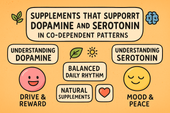
Supplements That Support Dopamine and Serotonin in Co-Dependent Patterns
Serotonin is the neurotransmitter of calm, confidence, and contentment. When it’s balanced, you feel peaceful and emotionally grounded. When it’s low, anxiety, mood swings, and emotional dependence take over. By understanding serotonin’s role in emotional health—and how to support it naturally—you can rebuild inner stability, improve relationships, and cultivate lasting happiness from within. 🌞💫
-

How Emotional Exhaustion in Codependency Impacts the Nervous System
The nervous system is the body’s communication network, connecting the brain to every organ and muscle. It regulates stress, mood, and emotion through a delicate balance of electrical and chemical signals. When overwhelmed, it can become dysregulated—leading to fatigue, anxiety, and emotional imbalance. Understanding how to calm and strengthen the nervous system is key to healing from chronic stress and emotional burnout. ⚡🌿
-
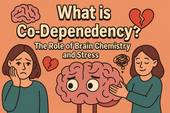
What Is Co-Dependency? The Role of Brain Chemistry and Stress
Stress is more than a feeling—it’s a full-body experience that begins in the brain and ripples through every cell. When cortisol surges and the nervous system stays on alert, your body can’t rest or recover. Over time, this constant tension affects energy, focus, mood, and even immune health. Understanding stress chemistry is the first step toward breaking free from burnout and finding calm again. 🌿
-

Creating a Supplement Stack for Motivation, Energy, and Anti-Procrastination
Motivation is the fuel behind every meaningful achievement—but it’s not just about willpower. It’s a mix of mindset, brain chemistry, and momentum. When energy, focus, and purpose align, action feels natural instead of forced. Learn how to harness motivation as a daily state, not a fleeting feeling.
-

Supplements for Building Consistency and Reducing Chronic Procrastination
Biochemistry is the bridge between biology and chemistry—the science of life at the molecular level. It explains how nutrients, hormones, and neurotransmitters interact to create energy, thought, and emotion. From brain function to muscle movement, biochemistry reveals the invisible processes that sustain health, balance, and vitality.
-
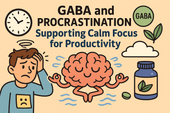
GABA and Procrastination: Supporting Calm Focus for Productivity
GABA is the brain’s natural calming messenger—a neurotransmitter that helps slow mental overactivity and ease stress. When GABA levels drop, focus fades, anxiety rises, and procrastination becomes more likely. By supporting GABA through nutrition, lifestyle, and supplements, you can restore calm clarity, improve focus, and take action with steady, balanced energy.
-
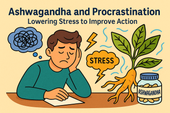
Ashwagandha and Procrastination: Lowering Stress to Improve Action
Science is the language of curiosity and discovery. It helps us understand the hidden patterns behind life, energy, and the universe. Through experimentation and critical thinking, science connects imagination to evidence—turning questions into knowledge. Whether through microscopes, molecules, or minds at work, science represents our endless pursuit of truth and innovation.
-

Neurotransmitters and Motivation: Supplements That Support Drive and Focus
Supplements can do more than boost physical health—they can also enhance mental clarity, focus, and motivation. Nutrients like omega-3s, magnesium, B vitamins, and adaptogens help balance neurotransmitters, stabilize mood, and support brain energy. When combined with good sleep, nutrition, and mindful habits, they can transform how your brain performs under stress.
-

How Stress Hormones Like Cortisol Fuel Procrastination (and What Helps)
Blood sugar isn’t just about physical health—it directly impacts focus, mood, and motivation. When glucose levels spike and crash, energy and attention do the same, fueling procrastination and brain fog. Learning how to stabilize blood sugar through balanced meals, mindful habits, and key nutrients helps keep your mind steady, focused, and ready to act.
-
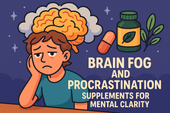
Brain Fog and Procrastination: Supplements for Mental Clarity
Brain fog can turn even simple tasks into mental hurdles. When your thoughts feel slow and unclear, procrastination often follows—making focus and productivity seem impossible. This article explores the biochemical and lifestyle causes of brain fog and reveals the most effective supplements for restoring mental clarity, focus, and sustained energy.
-

The Link Between Low Energy and Procrastination: Can Supplements Help?
Neurochemistry shapes how we think, feel, and act. When neurotransmitters like dopamine, serotonin, and GABA fall out of balance, it can lead to fatigue, anxiety, or lack of motivation—fueling procrastination and low mood. Understanding the brain’s chemical communication system helps us find ways to restore focus, calm, and emotional stability through nutrition, mindfulness, and targeted supplements.
-
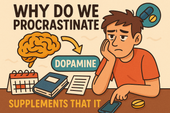
Why Do We Procrastinate? The Role of Dopamine and Supplements That Support It
Dopamine is the brain’s motivation messenger—the chemical that fuels focus, reward, and drive. When dopamine levels drop, even simple tasks can feel impossible to start. This article explores how dopamine shapes procrastination, motivation, and mental energy, along with natural supplements and daily habits that help restore balance and get things done.
-
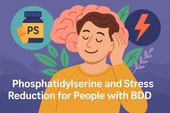
Phosphatidylserine and Stress Reduction for People with BDD
Stress is more than a mental state—it’s a full-body experience that affects hormones, brain chemistry, and emotional balance. For people with Body Dysmorphic Disorder (BDD), constant tension and worry about appearance can overload the nervous system. Learning how stress works and finding ways to calm it is key to breaking the cycle of anxiety and self-criticism.
-

How Antioxidants Like Vitamin C & E Support Mental Health in BDD
Antioxidants are the body’s natural defense against stress and inflammation. For people with Body Dysmorphic Disorder (BDD), oxidative stress can worsen fatigue, anxiety, and emotional imbalance. Nutrients like Vitamin C and E help protect brain cells, boost neurotransmitter function, and support a calmer, clearer mindset—building a stronger foundation for recovery.
-
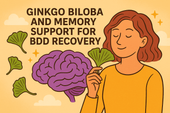
Ginkgo Biloba and Memory Support for BDD Recovery
Emotional regulation is the foundation of healing from Body Dysmorphic Disorder (BDD). When the nervous system stays in constant overdrive, even small stressors can trigger self-critical spirals. Learning to calm emotional reactivity helps restore clarity, confidence, and a sense of inner balance. By blending mindfulness, nervous system support, and self-compassion, you can retrain your brain to respond—not react—to emotion.
-
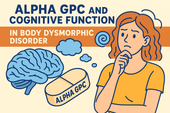
Alpha GPC and Cognitive Function in Body Dysmorphic Disorder
Mental fatigue can feel like your brain has hit a wall—thoughts slow down, focus fades, and motivation disappears. For people with Body Dysmorphic Disorder (BDD), chronic overthinking, emotional stress, and constant self-evaluation can deplete mental energy even further. Understanding what causes this cognitive exhaustion is the first step toward recovery—through rest, balanced nutrition, and targeted brain-supporting supplements.
-
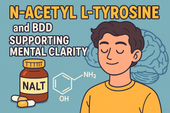
N-Acetyl L-Tyrosine and BDD: Supporting Mental Clarity
Chronic stress doesn’t just affect your mood—it reshapes your brain chemistry, weakens focus, and fuels the obsessive thought loops common in Body Dysmorphic Disorder (BDD). Over time, constant cortisol elevation drains mental energy and emotional balance. Learning to recognize and manage chronic stress is essential to restoring mental clarity, self-compassion, and resilience.
-

Chamomile and Lavender for Calming Obsessive Body Image Thoughts
The nervous system is the command center of our emotional and physical world—and in Body Dysmorphic Disorder (BDD), it often operates in overdrive. Understanding how the brain and body communicate under stress reveals why intrusive thoughts feel uncontrollable. Learning to regulate the nervous system through calm practices, nutrition, and supplements helps restore inner balance and emotional safety.
-
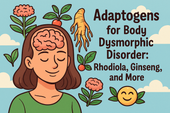
Adaptogens for Body Dysmorphic Disorder: Rhodiola, Ginseng, and More
Rhodiola rosea, often called the “golden root,” is an adaptogenic herb renowned for boosting stress resilience and mental endurance. For individuals with Body Dysmorphic Disorder (BDD), Rhodiola may help reduce fatigue, regulate cortisol, and enhance emotional balance. By supporting both mind and body, this powerful plant promotes calm focus, improved mood, and renewed energy to face daily challenges.
-

B Vitamins for Stress Resilience in BDD: Rebuilding Calm from Within
Biochemistry is at the heart of every thought, emotion, and reaction we experience. In Body Dysmorphic Disorder (BDD), chemical imbalances in neurotransmitters like serotonin, dopamine, and GABA can amplify stress and distort self-perception. Understanding the biochemistry behind mood and stress regulation offers a path toward healing—bridging the gap between emotional experience and the body’s molecular balance.
-
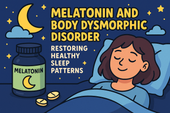
Melatonin and Body Dysmorphic Disorder: Restoring Healthy Sleep Patterns
Melatonin, the body’s natural sleep hormone, plays a vital role in helping people with Body Dysmorphic Disorder (BDD) restore healthy sleep cycles. When anxiety and obsessive thinking interfere with rest, melatonin levels often drop, leading to more emotional reactivity and distorted self-perception. This article explores how melatonin works, why BDD disrupts it, and how natural supplementation—combined with mindful routines—can help the brain and body finally find calm at night.
-
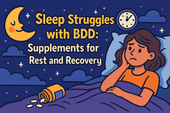
Sleep Struggles with BDD: Supplements for Rest and Recovery
When you’re living with Body Dysmorphic Disorder (BDD), restful sleep can feel impossible—but the right supplements can help reset your body’s natural rhythm. From magnesium and L-theanine to 5-HTP and ashwagandha, these nutrients support relaxation, lower cortisol, and enhance melatonin production. This article explores how supplements can calm the mind, ease nighttime anxiety, and promote true restorative sleep for emotional and physical recovery.
-
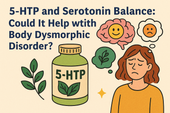
5-HTP and Serotonin Balance: Could It Help with Body Dysmorphic Disorder?
Anxiety can feel like a storm inside the mind—restless, overwhelming, and hard to control. In people with Body Dysmorphic Disorder (BDD), anxiety often fuels obsessive thoughts and self-criticism, creating a painful cycle of worry and self-doubt. This article explores the biological roots of anxiety, the role of neurotransmitters like serotonin and GABA, and how natural strategies such as mindfulness, supplements, and nervous system regulation can restore calm and mental clarity.
-

Can Ashwagandha Help Ease Stress and Anxiety in Body Dysmorphic Disorder?
Neurotransmitters like serotonin, dopamine, GABA, and acetylcholine are the chemical messengers that shape how we think, feel, and react to stress. In Body Dysmorphic Disorder (BDD), imbalances in these neurotransmitters can amplify anxiety, obsessive thinking, and emotional distress. This article explores how restoring healthy brain chemistry through nutrition, supplements, and mindfulness can help bring clarity, calm, and emotional stability.
-
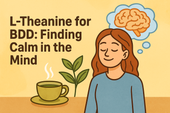
L-Theanine for BDD: Finding Calm in the Mind
Neurochemistry plays a central role in how we think, feel, and see ourselves. For those living with Body Dysmorphic Disorder (BDD), imbalances in neurotransmitters like serotonin, dopamine, and GABA can intensify anxiety, obsessive thoughts, and emotional distress. This article explores how regulating brain chemistry through supplements, mindfulness, and lifestyle changes can bring the nervous system back into harmony and restore inner calm.
-

Omega-3 Fatty Acids and Body Image Disorders: Supporting Emotional Health
Omega-3 fatty acids do far more than support heart health—they nourish the brain, stabilize mood, and may ease the emotional turbulence tied to body image disorders like BDD. This in-depth article explores how omega-3s regulate serotonin, dopamine, and inflammation, helping individuals reduce obsessive thoughts and rebuild self-acceptance. It also connects nutrition to therapy, mindfulness, and nervous system balance for holistic emotional healing.
-
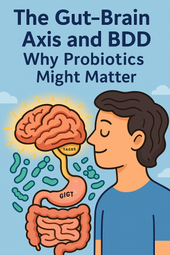
The Gut-Brain Axis and BDD: Why Probiotics Might Matter
The gut and brain are constantly in conversation — and that dialogue may shape how you experience Body Dysmorphic Disorder. By nurturing your microbiome with probiotics, prebiotics, and gut-healing nutrients, you can help rebalance serotonin, calm anxiety, and restore emotional stability from within 🧠🦠.
-
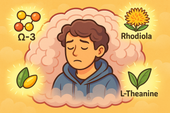
Brain Fog and Body Dysmorphic Disorder: Can Nootropic Supplements Help?
Brain fog often accompanies Body Dysmorphic Disorder, clouding focus and deepening emotional fatigue. Nootropic supplements like L-theanine, Rhodiola, and CoQ10 can help restore mental clarity, balance neurotransmitters, and bring calm energy back to the mind 🌿🧠.
-
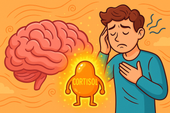
How Stress Hormones Like Cortisol May Worsen Body Dysmorphic Disorder
Chronic stress floods the brain with cortisol — the hormone that keeps you on high alert. In Body Dysmorphic Disorder, this chemical overdrive fuels anxiety, distorts self-image, and traps the body in survival mode. Calming cortisol helps restore both peace and perspective 🌿🧠.
-
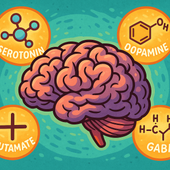
The Role of Neurotransmitters in BDD—and How Supplements May Help
Neurotransmitters like serotonin, dopamine, glutamate, and GABA shape how people with Body Dysmorphic Disorder perceive themselves. When these brain messengers fall out of balance, perception distorts — but targeted supplements can help restore calm, focus, and emotional regulation 🧠🌿.
-

What Is Body Dysmorphic Disorder? A Deeper Look at the Mind-Body Connection
Body Dysmorphic Disorder (BDD) isn’t just about appearance — it’s about perception. When brain chemistry, trauma, and stress distort self-image, the mind begins to see flaws that aren’t truly there. Healing starts by calming the nervous system and reconnecting mind and body 🪞🧠.
-

Keeping Calm in Competitive Sports: How to Train Your Mind, Body, and Chemistry for Peak Performance
Competitive pressure can overwhelm even the strongest athletes — but calm is trainable. By combining supplements like magnesium, L-theanine, and adaptogens with breathwork and mindset training, you can stay focused, balanced, and in control under any level of stress 🧠🏅.
-

Supplements for Parents Facing Toddler Tantrums: Staying Calm When Little Emotions Run Wild
Toddler tantrums can drain even the most loving parent — but your calm is powerful. With the right supplements like magnesium, L-theanine, and ashwagandha supporting your nervous system, you can stay patient, grounded, and kind, even when emotions run high 🧸🌿.
-

Workplace Stress and Anger Management Support
Workplace stress can quickly turn into frustration — but calm is a skill you can train. By combining supplements like magnesium, L-theanine, and adaptogens with breathwork and mindset tools, you can stay focused, patient, and emotionally grounded no matter how intense the office gets 💼🌿.
-

How to Stay Patient With Family During Stressful Holidays
Holiday gatherings can stir up old stress and test your patience — but calm is possible. With nervous system support from magnesium, L-theanine, and adaptogens, plus mindful breathing and clear boundaries, you can stay centered, kind, and grounded even when family chaos unfolds 🎄💞.
-

Supplements to Keep Calm During Traffic Jams
Getting stuck in traffic doesn’t have to ruin your mood. With calming supplements like magnesium, L-theanine, and ashwagandha, you can train your body to stay relaxed and focused behind the wheel — turning gridlock into a moment of grounded patience 🚗🌿.
-

The Role of Antioxidants in Healing Brain Stress from Dissociation
Antioxidants protect the brain from the oxidative stress caused by trauma and dissociation. By neutralizing free radicals and supporting mitochondrial recovery, they help restore clarity, focus, and emotional balance — allowing the mind to heal at the cellular level 🌿🧠.
-
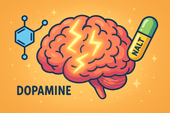
N-Acetyl L-Tyrosine (NALT) for Supporting Mental Clarity
N-Acetyl L-Tyrosine (NALT) fuels dopamine production — the neurotransmitter of focus and motivation. By supporting brain chemistry during stress, NALT helps restore mental clarity, energy, and alertness, making it easier to think clearly and feel present again ⚡🧠.
-

How Ginseng May Improve Focus and Energy in Dissociation
Ginseng helps combat the mental fatigue and fog that often come with dissociation. By supporting mitochondrial energy, balancing neurotransmitters, and regulating cortisol, it gently restores focus, motivation, and emotional presence — helping the mind reconnect with clarity and strength 🌿⚡.
-
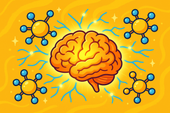
Phosphatidylserine and Dissociation: Supporting Cognitive Function
Phosphatidylserine helps calm the stress response by balancing cortisol, the body’s primary stress hormone. By lowering cortisol spikes, it protects memory, focus, and emotional stability — restoring clarity and mental presence for those struggling with dissociation 🧠🌿.
-
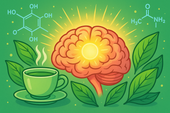
Can Green Tea Extract Help with Dissociative Brain Fog?
Green tea extract may help lift dissociative brain fog by supporting neurotransmitter balance, reducing inflammation, and enhancing energy at the cellular level. With its key compounds EGCG and L-theanine, it promotes calm focus, clarity, and emotional presence — helping you feel more alert and grounded 🍵🧠.
-
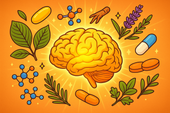
Building a Natural Supplement Stack for Dissociation Support
Building a supplement stack for dissociation means nourishing the brain and body back into communication. By supporting neurotransmitters, gut health, and energy balance through nutrients like magnesium, omega-3s, curcumin, and probiotics, you can help restore clarity, calm, and connection — one layer at a time 🌿🧠.
-

Chamomile and Lavender for Dissociative Anxiety Relief
Chamomile and lavender work together to calm dissociative anxiety by soothing the nervous system and restoring emotional safety. Their natural compounds balance cortisol, enhance GABA activity, and activate the vagus nerve — helping you feel grounded, connected, and at peace again 🌿💜.
-
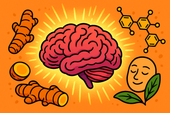
Curcumin for Inflammation and Mental Clarity in Dissociation
Curcumin, the golden compound in turmeric, does more than fight inflammation — it helps clear the mental fog often tied to dissociation. By calming neuroinflammation, balancing neurotransmitters, and supporting mitochondrial energy, curcumin can restore mental clarity, focus, and emotional presence 🌿🧠.
-
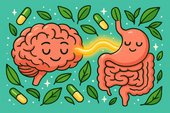
Probiotics and Dissociation: Exploring the Gut–Brain Axis
The gut–brain axis plays a vital role in emotional awareness and presence. When the microbiome is balanced, it supports serotonin production, vagus nerve activity, and calm focus. Probiotics help repair this connection — restoring safety, clarity, and the feeling of truly being in your body again 🌿🧠.
-
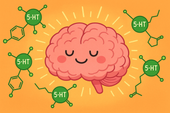
5-HTP for Dissociation: Supporting Serotonin and Emotional Stability
5-HTP helps bridge the gap between emotional numbness and stability by supporting serotonin production — the neurotransmitter that shapes mood, sleep, and sensory awareness. For people experiencing dissociation, 5-HTP may gently restore connection, presence, and emotional balance from the inside out 🌿🧠.
-

CoQ10 and Energy Support for People with Dissociation
Chronic dissociation often leaves the body running on empty — tired, foggy, and disconnected. CoQ10 helps recharge that system at the cellular level by restoring mitochondrial energy, reducing oxidative stress, and supporting the brain’s capacity to stay present. It’s energy medicine for both body and mind ⚡🧠.

















































